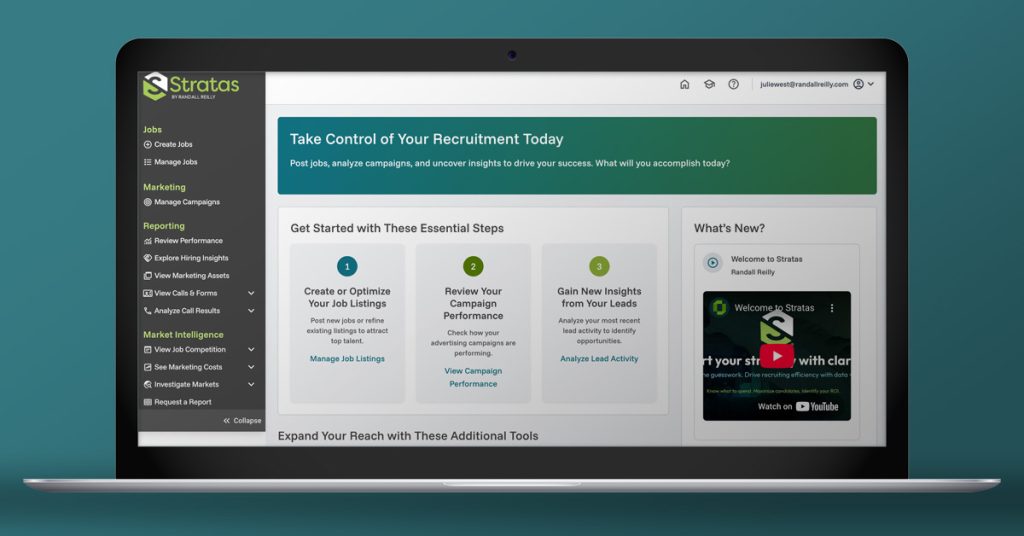
There’s a moment that plays out in far too many companies: “We just closed a new contract. Can the recruiting team staff it?”
It sounds like progress, but it actually means the business just made a talent-dependent decision without involving the very team responsible for delivering the talent.
Now the talent leaders are working with no runway, a pay rate that doesn’t reflect market conditions, and a timeline that was never validated.
That’s not a hiring problem. It’s a planning problem.
What goes wrong without Recruiting in the room?
When business leaders move forward without checking if hiring is realistic, these are the typical consequences:
1. The bid starts off with flawed assumptions.
Wages, hiring timelines, and applicant volume are often misjudged. Pricing gets approved based on numbers that don’t reflect the actual market and the specific market.
2. Execution breaks down under hiring constraints.
Sales closes the deal, operations builds the plan around it, then the recruiting team is told to fill the roles. If they can’t, the whole strategy stalls before it really begins.
3. Internal friction grows.
Sales wants to move fast and keep the client happy, operations is left holding a plan they can’t execute, and talent leaders end up blamed for problems they never had a chance to prevent.
What changes when Recruiting is included earlier?
When talent strategy has a seat at the table from the start, the entire business plan becomes more grounded, more efficient, and a lot easier to execute.
1. The assumptions get smarter.
Before pricing a bid or opening a new location, leaders ask: “Can we actually hire here?” That single question leads to more realistic timelines, wages, and launch expectations.
2. Launches stay on track.
When the hiring plan is built alongside the business plan, there’s no last-minute scramble. Talent leaders have the runway they need to deliver, and the team can launch on time with the right people in place.
3. Confidence increases.
Teams know what to expect, and they trust the plan they’ve built. Sales isn’t making unrealistic promises, operations isn’t left holding the bag, and the hiring team isn’t stuck reacting. Everyone moves forward together knowing the strategy actually built to work.
What does this look like in practice?
During a recent roundtable, a talent leader shared how their team’s process changed once they were brought in earlier. Before a bid went out, sales would check in to see if hiring in the target area was even possible. They’d look at the size of the talent pool, what pay it would take to compete, and how long staffing might take.
However, that is impossible if you don’t have the right market data.
The strategy wasn’t complicated. But with the right market data in hand, the kind that tools like Stratas® provide, the team had the insight to set the right expectations.
When the deal closed, the recruiting team already had a head start. The roles got filled, the timeline held, and the plan stayed intact.
How to make this your new norm?
Making hiring part of your business strategy doesn’t just happen. It takes a few key shifts in how teams plan and work together.
Here’s where high-performing teams start:
1. Treat talent strategy as business strategy.
Don’t wait until goals are set or deals are signed. Bring your talent leaders into early conversations about growth, expansion, or major changes. If hiring will determine success, talent should help shape the strategy, not just react to it.
2. Standardize hiring feasibility checks.
Before you approve pricing, timelines, or launch plans, add a quick talent check-in. Ask talent leaders to confirm:
- What the labor market looks like in that area.
- Whether your pay is competitive.
- How long hiring would realistically take.
Again, this is only possible with the right market data. Without it your strategy can outpace your ability to execute.
3. Equip your Recruiting team to move fast.
Once the direction is clear, hand off more than just headcount targets. Set the recruiting team up with what they need to move fast and stay aligned.
They need to be able to answer:
- What is the role expected to accomplish?
- What qualities or experience matter most?
- What parts of the timeline are fixed, and where is there flexibility?
These steps aren’t about adding friction. They’re how you build plans that work and teams that can deliver on them.
Final thought.
If your ability to deliver depends on the people you hire, then recruiting can’t be an afterthought. It needs to be part of the business strategy from the start.
But inviting your talent team into early conversations isn’t enough on its own. To shape plans that are actually executable, they need more than experience. They need accurate market data and real-time insight to confirm what’s possible before timelines and budgets are finalized.
When your strategy is built on that kind of clarity, your recruiting team becomes a competitive advantage.
Bring your strategy and hiring plan together

Stratas® gives your talent team the visibility they need to align hiring with strategy from the very beginning. That means timelines that hold, pay that attracts the right candidates, and plans that can actually be delivered.
Ready to align hiring with strategy? Schedule your quick demo by filling out the form below and see how Stratas® brings clarity to your next plan.
